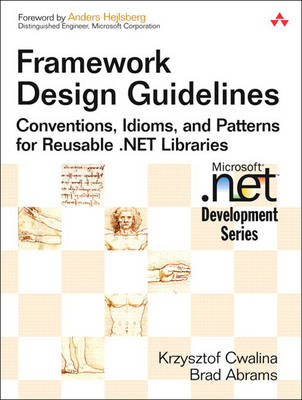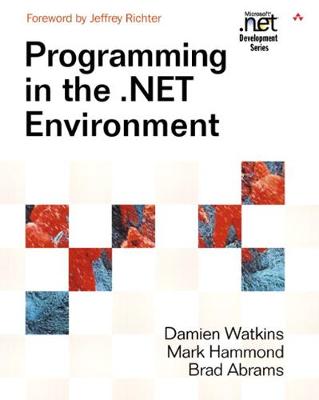Microsoft Windows Development
2 total works
A new edition of this title is available, ISBN-10: 0321545613 ISBN-13: 9780321545619
"This book is an absolute must-read for all .NET developers. It gives clear do and don't guidance on how to design class libraries for .NET. It also offers insight into the design and creation of .NET that really helps developers understand the reasons why things are the way they are. This information will aid developers designing their own class libraries and will also allow them to take advantage of the .NET class library more effectively."
--Jeffrey Richter, author/trainer/consultant, Wintellect
"Framework Design Guidelines will help you in two important ways. First, any .NET developer will benefit from a greater understanding of the design principles that govern the .NET Base Class Library. Second, a deeper understanding of these principles will help you to create software that integrates well with the .NET environment. Quite frankly, this book should be on every .NET developer's bookshelf."
--Bill Wagner, founder and consultant, SRT Solutions, author of Effective C#
"Not since Brooks' The Mythical Man Month has the major software maker of its time produced a book so full of relevant advice for the modern software developer. This book has a permanent place on my bookshelf and I consult it frequently."
--George Byrkit, senior software engineer, Genomic Solutions
"This book is a must-read for all architects and software developers thinking about frameworks. The book offers insight into some driving factors behind the design of the .NET Framework. It should be considered mandatory reading for anybody tasked with creating application frameworks."
--Peter Winkler, senior software engineer, Balance Technology Inc.
"Frameworks are valuable but notoriously difficult to construct: Your every decision must be geared towards making them easy to be used correctly and difficult to be used incorrectly. This book takes you through a progression of recommendations that will eliminate many of those downstream 'I wish I'd known that earlier' moments. I wish I'd read it earlier."
--Paul Besly, principal technologist, QA
"Filled with information useful to developers and architects of all levels, this book provides practical guidelines and expert background information to get behind the rules. Framework Design Guidelines takes the already published guidelines to a higher level, and it is needed to write applications that integrate well in the .NET area."
--Cristof Falk, software engineer
Framework Design Guidelines: Conventions, Idioms, and Patterns for Reusable .NET Libraries teaches developers the best practices for designing system frameworks and reusable libraries for use with the Microsoft .NET Framework and WinFX. This book focuses on the design issues that directly affect the programmability of a framework, specifically its publicly accessible APIs.
This book can improve the work of any .NET developer producing code that other developers will use. An added benefit is a collection of annotations to the guidelines by various members of the Microsoft .NET Framework and WinFX teams, which provide a lively discussion of the motives behind the guidelines, along with examples of good reasons for breaking the guidelines.
Microsoft architects Krzysztof Cwalina and Brad Abrams offer guidelines for framework design from the top down. From their long experience and deep insight, you will learn
The general philosophy of framework design Principles and guidelines that are fundamental to overall framework design Naming guidelines for the various parts of a framework, such as namespaces, types, and members Guidelines for the design of types and members of types Issues and guidelines that are important to ensure appropriate extensibilityin your framework Guidelines for working with exceptions, the preferred error reporting mechanism in the .NET Framework and WinFX Guidelines for extending and using types that commonly appear in frameworks Guidelines for and examples of common framework design patternsGuidelines in this book come in four major forms: Do, Consider, Avoid, and Do not. In general, a Do guideline should almost always be followed, a Consider guideline should generally be followed, an Avoid guideline indicates that something is generally not a good idea, and a Do not guideline indicates something you should almost never do. Every guideline includes a discussion of its applicability, and most guidelines include a code example.
A companion DVD includes the Designing .NET Class Libraries video series, instructional presentations by the authors on design guidelines for developing classes and components that extend the .NET Framework. A sample API specification and other useful resources are also included.

